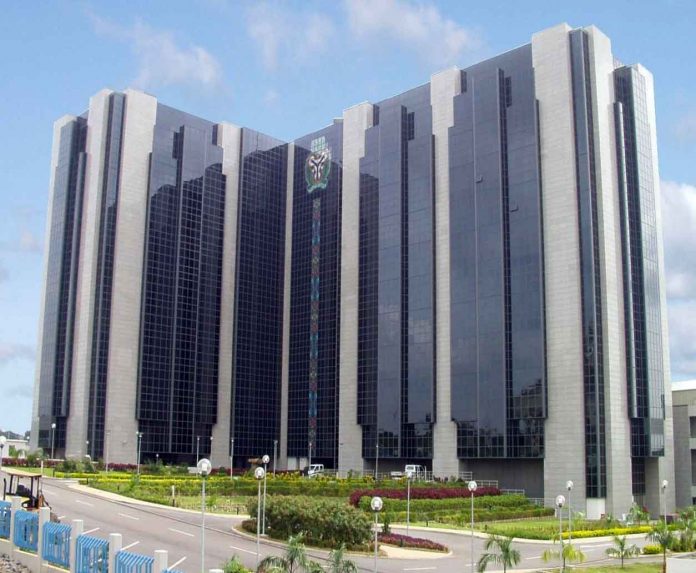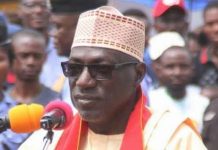(In continuation of our decision to bring to our readers/browsers useful information on governance in Nigeria, we focus attention this week on one of the most important government agencies in the country – the Central Bank of Nigeria).
The Central Bank of Nigeria, CBN, is the apex monetary authority of Nigeria established by the CBN Act of 1958 and commenced operations on July 1, 1959.
The major regulatory objectives of the bank as stated in the CBN Act are to: maintain the external reserves of the country, promote monetary stability and a sound financial environment, and to act as a banker of last resort and financial adviser to the federal government. The CBN’s role as lender of last resort and adviser to the federal government has sometimes pushed it into murky regulatory waters.
After the end of colonial rule the desire of the government to become pro-active in the development of the economy showed visibly especially after the end of the Nigerian civil war, the bank followed the government’s desire and showed determination to supplement any short falls in credit allocations to the real sector. The government through the CBN has been actively involved in building the nation’s money and equity centers, forming securities regulatory board and introducing treasury instruments into the capital market.
Authorizing legislation
The G.D. Paton Report formed the cornerstone of the first banking legislation in the country: the banking ordinance of 1952. The ordinance was designed to prevent non-viable banks from mushrooming, and to ensure orderly commercial banking. The banking ordinance triggered a rapid growth in the industry, with growth also came disappointment. By 1958, a few banks had failed. To curtail further failures and to prepare for indigenous control, in 1958, a bill for the establishment of Central Bank of Nigeria was presented to the House of Representatives of Nigeria. The Act was fully implemented on July 1, 1959, when the Central Bank of Nigeria came into full operation. In April 1960, the Bank issued its first treasury bills. In May 1961 the Bank launched the Lagos Bankers Clearing House, which provided licensed banks a framework in which to exchange and clear checks rapidly. By July 1, 1961 the Bank had completed issuing all denominations of new Nigerian notes and coins and redeemed all of the West African Currency Board’s previous notes.
Policy implementation and criticism
The CBN’s early functions were mainly to act as the government’s agency for the control and supervision of the banking sector, to monitor the balance of payments according to the demands of the federal government and to tailor monetary policy along the demands of the federal budget. The central bank’s initial lack of financial competence over the finance ministry led to deferment of major economic decisions to the finance ministry. A key instrument of the bank was to initiate credit limit legislation for bank lending. The initiative was geared towards making credit available to neglected national areas such as agriculture and manufacturing. By the end of 1979, most of the banks did not adhere to their credit limits and favored a loose interpretation of CBN’s guidelines.
The apex bank did not effectively curtail the prevalence of short term loan maturities. Most loans given out by commercial banks were usually set within a year. The major policy to balance this distortion in the credit market was to create a new Bank of Commerce and industry, a universal bank. However, the new bank did not fulfill its mission. Another policy of the bank in concert with the intentions of the government was direct involvement in the affairs of the three major expatriate commercial banks in order to forestall any bias against indigenous borrowers and consumers. By 1976, the federal government had acquired 40% of equity in the three largest commercial banks. The bank’s slow reaction to curtail inflation by financing huge deficits of the federal government has been one of the sore points in the history of the central bank. Coupled with its failure to control the burgeoning trade arrears in 1983, the country was left with huge trade debts totaling $6 billion.
The CBN Today
It is generally believed that since the headship of the CBN is a political matter, the apex bank cannot be entirely shielded from the whims and caprices of the political party in power at the center. Experts will advance various scenarios to show that this indeed has been the case.
A former Chief Executive Officer of one of the new generation banks in the country, Zenith Bank Plc, Mr. Godwin Emefiele, assumed the mantle as the 11th CBN Governor as well as its 10th indigenous governor. Mr. Emefiele, who replaced Mallam Sanusi Lamido Sanusi, at the CBN in June 2014, brought to the job over 20 years of banking experience. He held several strategic positions in his 18 years in the banking industry. Before becoming the Managing Director of Zenith Bank Plc, he had worked in corporate banking, treasury and financial controls. Before that, he was a lecturer in Finance and Insurance at the University of Port Harcourt, as well as his alma mater, University of Nigeria, Nsukka, where he obtained both B.Sc. and MBA degrees in Finance. He is also an alumnus of Executive Education at Stanford University, Harvard University and Wharton Graduate School of Business.
Mr. Emefiele acknowledged the excellent work that the Bank had done to achieve financial system stability, low inflation, exchange rate stability, an efficient payment system, and a consistent monetary policy in the last couple of years. He has continued to maintain that the vision of the Central Bank of Nigeria is to create a people-centered Central Bank by “delivering price and financial system stability and promoting sustainable economic development”.


















